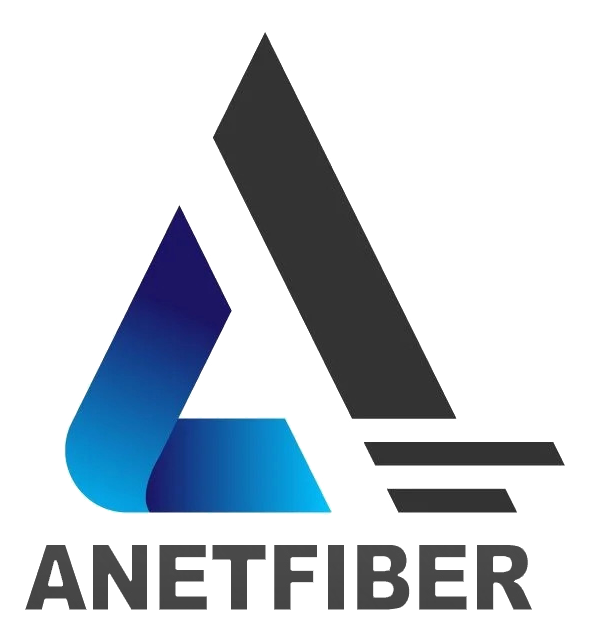5 Ways Fiber Optics Revolutionize Cloud Computing

Introduction to Fiber Optics and Cloud Computing
In today's digital age, Fiber Optics and Cloud Computing play pivotal roles in shaping the way data is transmitted, stored, and managed. Understanding the fundamentals of these technologies is essential to grasp their impact on modern IT infrastructure.
Understanding Fiber Optics
The Basics of Fiber Optic Technology
At its core, Fiber Optics technology involves the transmission of data through optical fibers made of glass or plastic. These fibers are designed to carry light between two points, enabling high-speed data transfer over long distances. The use of light as a medium for data transmission sets fiber optics apart from traditional copper wire systems.
How Fiber Optics Work
The process begins with a transmitter that converts electrical signals into optical signals, which are then transmitted through the fiber optic cables. Upon reaching the destination, a receiver decodes the optical signals back into electrical data. This seamless conversion process allows for rapid and efficient data transmission.
The Role of Cloud Computing
What is Cloud Computing?
Cloud Computing refers to the delivery of computing services—including servers, storage, databases, networking, software, and more—over the internet ("the cloud"). Rather than owning their own computing infrastructure or data centers, companies can access technology resources on an as-needed basis from a cloud provider.
Importance of Cloud Computing in Today's World
The significance of Cloud Computing lies in its ability to offer flexible and scalable solutions for businesses and individuals alike. It enables organizations to streamline operations, reduce costs, and access advanced technologies without heavy upfront investments in hardware or infrastructure.
By understanding the underlying principles of Fiber Optics and Cloud Computing, we can explore how these technologies intersect to revolutionize modern IT systems.
Enhancing Data Transmission with Fiber Optics
In the realm of data transmission technologies, Fiber Optics has a profound impact, revolutionizing the way information is conveyed and processed. The utilization of fiber optics brings about significant improvements in speed, efficiency, and network latency reduction.
The Impact of Fiber Optics on Data Transmission Technologies
Speed and Efficiency in Data Transmission
The adoption of Fiber Optics technology results in unparalleled speed and efficiency in data transmission. The capability of optical fibers to carry light enables data to travel at remarkable speeds, facilitating swift communication and seamless transfer of large volumes of information. This enhanced speed and efficiency are instrumental in meeting the escalating demands for rapid data processing and delivery in today's digital landscape.
Reducing Network Latency
One of the key advantages of Fiber Optics is its ability to reduce network latency significantly. By transmitting data at the speed of light through optical fibers, latency is minimized, ensuring near-instantaneous response times for data requests. This reduction in latency enhances user experiences, particularly in real-time applications such as video streaming, online gaming, and cloud-based services.
Fiber Optic Backbone and Data Center Connectivity
Importance of a Strong Backbone
The establishment of a robust Fiber Optic backbone forms the foundation for reliable and high-performance data transmission networks. A strong backbone infrastructure ensures that data travels seamlessly across vast distances without compromising on speed or integrity. This is crucial for supporting the increasing demands placed on modern networks by cloud computing services and other bandwidth-intensive applications.
Improving Data Center Connectivity
Fiber Optics plays a pivotal role in enhancing data center connectivity by providing high-speed, low-latency connections between various components within the infrastructure. This improved connectivity enables efficient communication between servers, storage systems, and networking equipment, contributing to optimized performance and responsiveness within data centers.
Utilizing fiber optics not only elevates the speed and efficiency of data transmission but also strengthens the connectivity infrastructure essential for supporting advanced cloud computing services.
Boosting Network Scalability and Efficiency
As the demand for seamless connectivity and high-performance network infrastructure continues to grow, Fiber Optics technology plays a pivotal role in boosting network scalability and efficiency. By addressing bandwidth requirements and enhancing network scalability, fiber optics contributes significantly to the advancement of cloud computing services.
Meeting Bandwidth Requirements with Fiber Optics
The Need for High Bandwidth in Cloud Services
In the realm of Cloud Computing, the need for high bandwidth is paramount to support the transmission of vast amounts of data across distributed systems. Cloud services rely on robust bandwidth capabilities to ensure rapid access to applications, databases, and storage resources. The increasing adoption of bandwidth-intensive technologies such as video streaming, virtualization, and big data analytics further underscores the criticality of high-speed data transfer within cloud environments.
How Fiber Optics Meet These Demands
Fiber Optics technology meets the escalating bandwidth demands of cloud services through its unparalleled capacity for high-speed data transmission. Optical fibers enable the seamless transfer of large volumes of data at remarkable speeds, ensuring that cloud-based applications and services operate with optimal performance. The ability of fiber optics to carry light as a medium for data transmission allows for efficient handling of massive datasets, contributing to enhanced user experiences and streamlined operations within cloud environments.
Enhancing Network Scalability
The Role of Fiber Optics in Scalable Networks
Network scalability is essential for accommodating growing workloads and expanding user bases within cloud computing infrastructures. Fiber Optics technology facilitates network scalability by providing a foundation for adaptable and agile communication networks. The inherent flexibility of optical fibers allows for seamless upgrades and expansions without compromising on performance or reliability. This scalability ensures that cloud providers can meet evolving demands without disruptions or degradation in service quality.
Examples of Scalability Improvements
An illustrative example of how fiber optics enhances network scalability is evident in the seamless integration of additional optical fibers into existing networks. This expansion enables cloud service providers to augment their infrastructure's capacity without overhauling the entire system, resulting in cost-effective scalability solutions. Furthermore, advancements in fiber optic technologies, such as dense wavelength division multiplexing (DWDM), empower networks to handle increased traffic loads efficiently while maintaining consistent performance levels.
By addressing bandwidth requirements and facilitating network scalability, Fiber Optics technology underpins the foundation for robust and adaptable cloud computing infrastructures.
Securing Cloud Environments Through Fiber Optics
As organizations increasingly rely on Fiber Optics and Cloud Computing to manage their data and operations, the aspect of security becomes paramount in ensuring the integrity and confidentiality of sensitive information. The fusion of fiber optics technology with cloud environments brings forth enhanced security measures that safeguard against potential threats and vulnerabilities.
Fiber Optics and Cloud Security
The Importance of Security in Cloud Computing
In the realm of Cloud Computing, security stands as a foundational pillar essential for protecting digital assets, maintaining privacy, and upholding regulatory compliance. With the proliferation of cloud-based services and the storage of critical data in virtual environments, the need for robust security measures has become more pronounced than ever. Threats such as unauthorized access, data breaches, and cyber-attacks necessitate comprehensive security frameworks to mitigate risks and fortify cloud infrastructures.
How Fiber Optics Enhance Security Measures
The integration of Fiber Optics technology contributes significantly to enhancing security measures within cloud environments. By leveraging fiber optic connections for data transmission, organizations can establish secure communication channels that are inherently resistant to electromagnetic interference and eavesdropping attempts. The use of light signals through optical fibers ensures that data remains encrypted during transit, reducing the susceptibility to interception or tampering.
Furthermore, fiber optics enable the implementation of secure network architectures with dedicated connections between cloud servers, storage systems, and end-user devices. This segregation of network traffic through fiber optic links enhances isolation capabilities, limiting potential attack surfaces and bolstering overall system resilience against malicious activities.
Hybrid Cloud Environments and Fiber Optics
What Are Hybrid Cloud Environments?
Hybrid Cloud Environments represent a strategic amalgamation of public cloud services with private cloud infrastructure or on-premises resources. This hybrid approach allows organizations to leverage the scalability and cost-efficiency of public clouds while retaining control over sensitive data through private deployments. The seamless integration between these distinct environments enables dynamic workload management based on specific business requirements.
The Role of Fiber Optics in Hybrid Solutions
Within Hybrid Cloud Environments, fiber optics play a pivotal role in facilitating secure connectivity between disparate cloud instances and on-premises systems. The utilization of fiber optic links ensures high-speed interconnectivity while maintaining stringent security protocols across hybrid deployments. This enables seamless data transfer between public and private clouds without compromising on performance or jeopardizing sensitive information.
Moreover, the inherent reliability and low latency characteristics of fiber optics contribute to consistent data accessibility across hybrid infrastructures, supporting real-time synchronization and continuity in operations. As organizations embrace hybrid cloud models to optimize resource utilization and enhance flexibility, the integration of fiber optics serves as a linchpin for establishing resilient connectivity while upholding stringent security standards.
The Future of Cloud Computing with Fiber Optics
As technology continues to advance, the future of Cloud Computing and Fiber Optics holds promising innovations that will further transform the landscape of data storage, management, and transmission.
Innovations in Cloud Storage Solutions
The Evolution of Cloud Storage
The evolution of Cloud Storage has been marked by a shift towards more efficient and scalable solutions. With the exponential growth of digital data, cloud storage platforms have evolved to accommodate vast volumes of information while ensuring accessibility and reliability. Innovations in cloud storage architectures have focused on optimizing data redundancy, improving fault tolerance, and enhancing disaster recovery capabilities to meet the evolving needs of businesses and individuals.
Future Trends in Cloud Storage with Fiber Optics
The integration of Fiber Optics into cloud storage solutions is poised to revolutionize data accessibility and transfer speeds. As organizations increasingly rely on cloud-based repositories for critical information, the adoption of fiber optics will enable seamless and rapid data retrieval, contributing to enhanced operational efficiency. Future trends indicate a substantial emphasis on leveraging fiber optic connectivity to establish high-speed links between cloud storage systems and end-user devices, ensuring swift access to mission-critical data assets.
The Continuing Impact of Fiber Optics on Cloud Computing Services
Emerging Technologies and Fiber Optics
The synergy between emerging technologies and Fiber Optics is set to redefine the capabilities of cloud computing services. Advancements in fiber optic communication protocols, such as coherent optical transmission and space-division multiplexing, are poised to unlock unprecedented bandwidth capacities for cloud networks. These technologies will enable cloud service providers to deliver enhanced performance, lower latency, and increased scalability, catering to the growing demands for high-speed data processing and delivery.
The Long-Term Benefits of Fiber Optics in Cloud Computing
Looking ahead, the long-term benefits of integrating Fiber Optics into cloud computing infrastructures are multifaceted. Beyond immediate gains in speed and efficiency, fiber optics will underpin the foundation for sustainable scalability and robust security measures within cloud environments. Additionally, advancements in fiber optic technologies will pave the way for cost-effective network expansions while maintaining consistent performance levels across diverse workloads.
Conclusion
In conclusion, the integration of Fiber Optics into Cloud Computing has ushered in a new era of data transmission, storage, and security. The symbiotic relationship between these technologies has redefined the capabilities of modern IT infrastructure and holds immense promise for the future.
Recap of Fiber Optics' Role in Cloud Computing
Throughout this exploration, it becomes evident that Fiber Optics serves as the backbone of cloud computing, underpinning its fundamental operations and advancements. The unparalleled speed, efficiency, and scalability offered by fiber optics have revolutionized data transmission technologies within cloud environments. From enhancing network connectivity to fortifying security measures, fiber optics has become an indispensable component in shaping the landscape of cloud computing services.
The seamless integration of Fiber Optics technology into cloud infrastructures has not only elevated data transmission speeds but also laid the groundwork for sustainable scalability and robust security frameworks. By meeting bandwidth requirements, reducing network latency, and fortifying cloud security measures, fiber optics has become synonymous with innovation and reliability in modern IT ecosystems.
Looking Forward to a Brighter Future in Cloud Computing
As we look ahead, the future of Cloud Computing with Fiber Optics holds promising prospects for further advancements. Innovations in cloud storage solutions are poised to leverage fiber optic connectivity to establish high-speed links between repositories and end-user devices, ensuring rapid access to critical data assets. Moreover, emerging technologies such as coherent optical transmission and space-division multiplexing are set to unlock unprecedented bandwidth capacities for cloud networks.
The long-term benefits of integrating Fiber Optics into cloud computing infrastructures extend beyond immediate gains in speed and efficiency. These benefits encompass sustainable scalability, enhanced security measures, and cost-effective network expansions while maintaining consistent performance levels across diverse workloads.
In essence, the synergy between Fiber Optics and Cloud Computing represents a transformative force that continues to shape the digital landscape. As organizations embrace these technologies to drive innovation and efficiency, the potential for further breakthroughs remains boundless.


